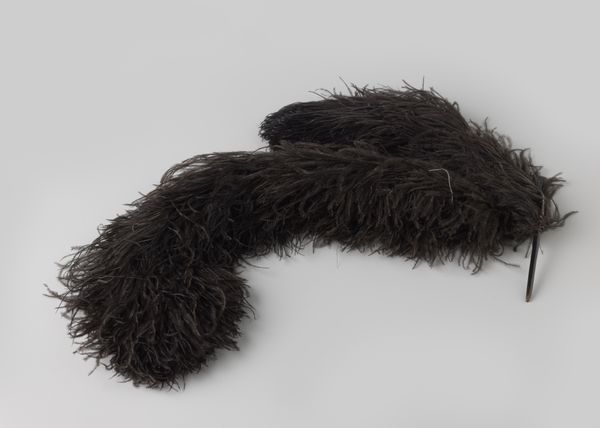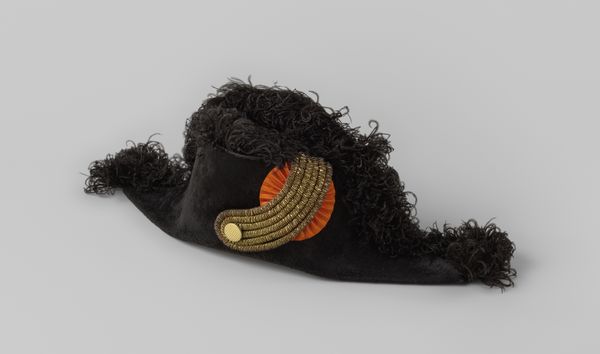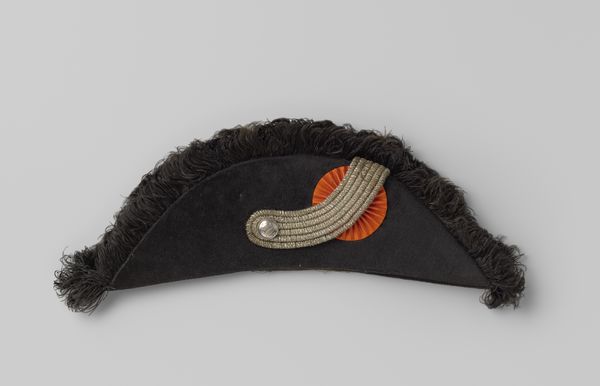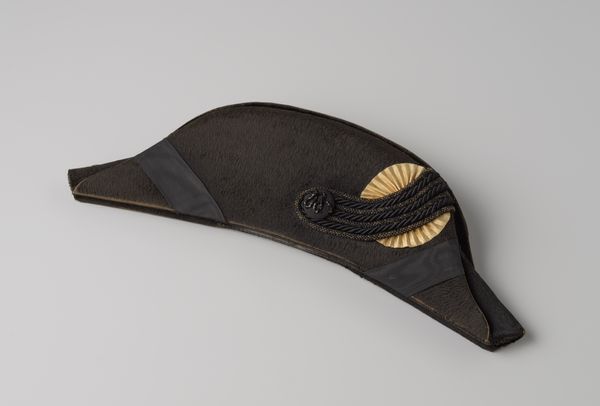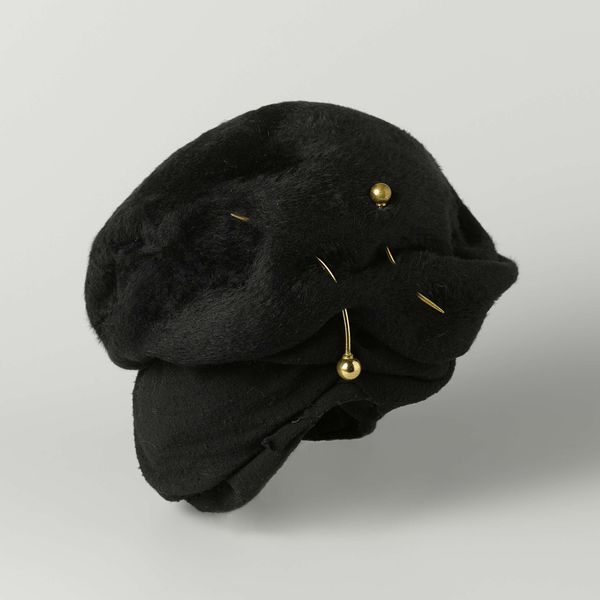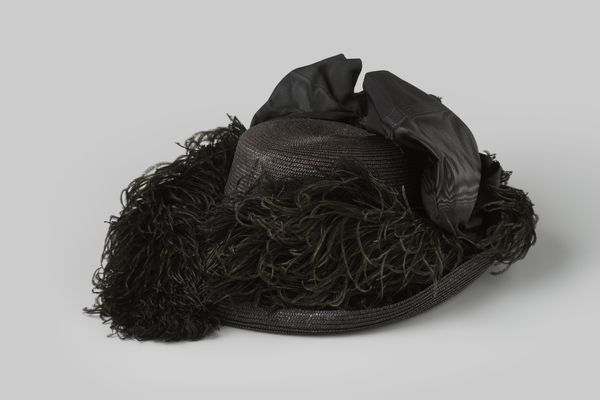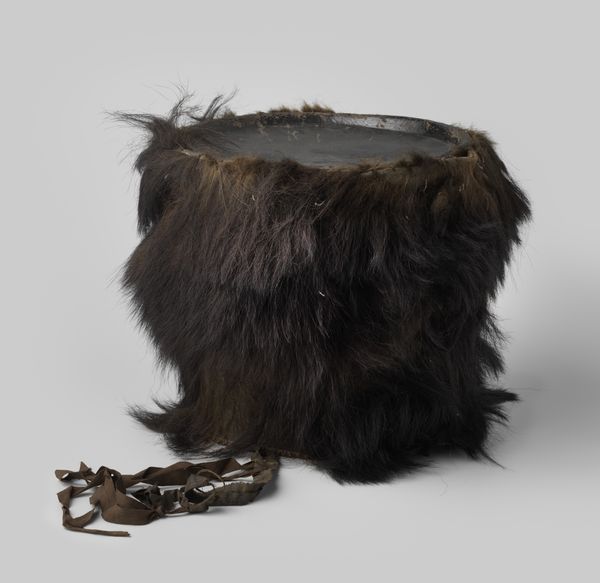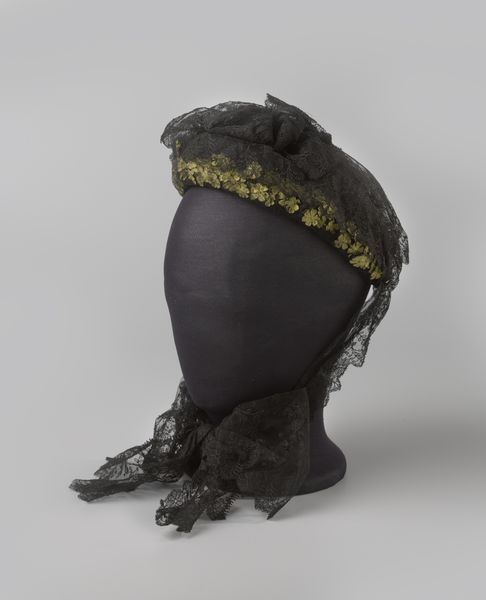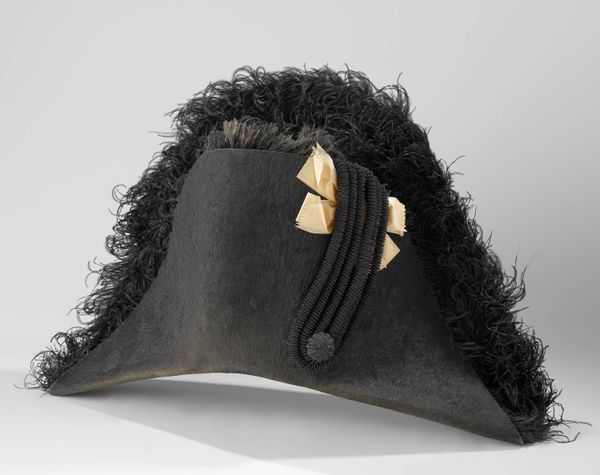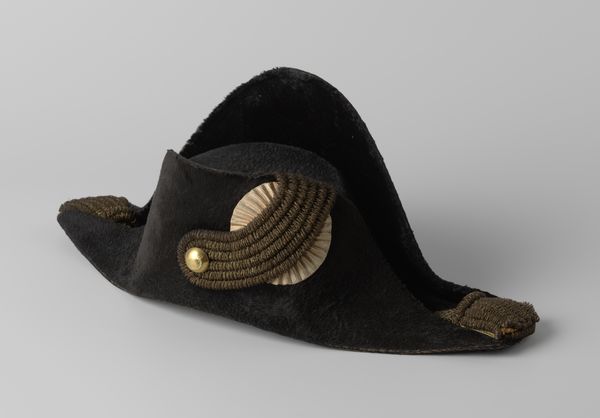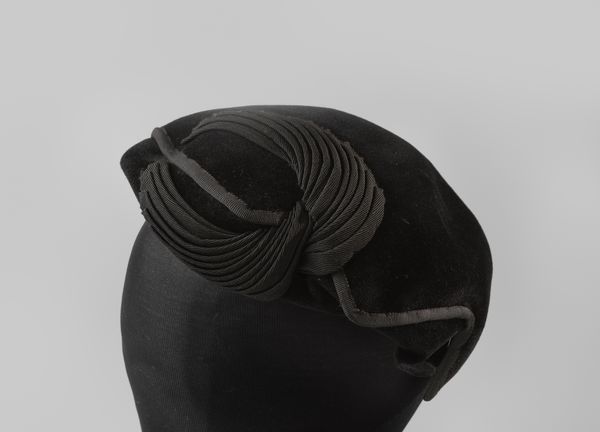
Steek van zwart zijden fluweel versierd met een oranje kokarde, een lis van gouddraad en voorzien van een zwarte struisveer c. 1885 - 1899
0:00
0:00
Dimensions: width 50 cm, depth 2.5 cm, height 22.5 cm
Copyright: Rijks Museum: Open Domain
Editor: This intriguing piece is a bicorne hat from the late 19th century, crafted from black velvet, gold thread, and ostrich feathers. It has such a severe, formal presence, yet also seems quite opulent and dramatic. How would you interpret this piece? Curator: The hat certainly evokes an air of formality and status. But look closer, at the choice of materials – the deep black velvet and the flamboyant ostrich feather. These aren’t just decorative; they speak to specific social identities and aspirations. Consider the 'kokarde,' or cockade—an orange, tightly pleated circular ribbon topped with a gold braid or bullion. Editor: Is the orange cockade symbolic in any particular way? Curator: Absolutely. Orange here refers to the House of Orange-Nassau which, as the royal house of the Netherlands, is not only an emblem of monarchy and continuity but of patriotism. Editor: So, it's a very deliberate statement of loyalty, then? Curator: Precisely! The black velvet, though luxurious, tempers the flamboyance, grounding it in a certain gravity befitting official duty or courtly ceremony. Hats, in general, have historically been potent symbols of authority, but it's how these signifiers interact that paints the larger, more complex picture. What cultural memory is stirred in you by this hat? Editor: I find it so interesting how a simple piece of clothing can carry so much symbolic weight. Curator: Indeed, and by understanding that visual vocabulary, we unlock so much about the era and its values. A fascinating relic!
Comments
No comments
Be the first to comment and join the conversation on the ultimate creative platform.
